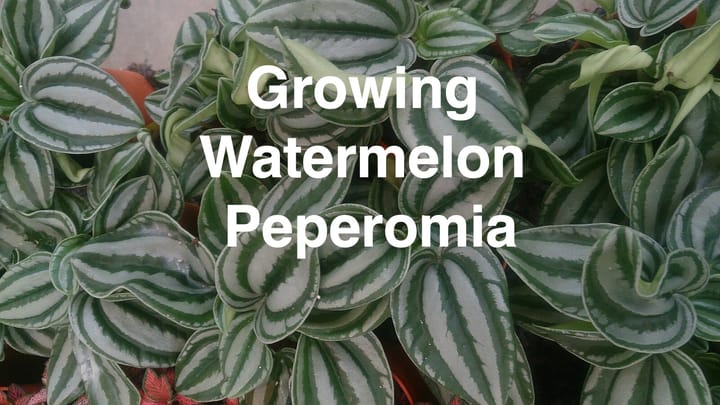How to Grow Rex Begonias
Rex Begonias are a stunning group of plants known for their colorful and patterned foliage rather than their flowers. Native to Southeast Asia, these semi-tropical plants can be grown in various climates, including indoors as houseplants.

Table of Contents
To successfully grow Rex Begonias, it's essential to provide them with the right conditions, such as bright indirect light, well-draining soil, and proper care.
This article walks you through planting, maintaining, and enjoying these vibrant plants in your garden or home.
About Rex Begonias
Rex begonias are a group of herbaceous, rhizomatous perennial plants known for their vibrant, colorful foliage.
These tropical plants, also known as painted-leaf begonias, belong to the rex-cultorum group and are widely grown as indoor plants due to their striking appearance.
Numerous species and cultivars of rex begonias vary in sizes, heights, and foliage colors, such as green, red, purple, silver, pink, and even combinations of these colors.
As part of the rhizomatous begonias, rex begonias typically grow from thick, fleshy stems called rhizomes, which store water and nutrients required for growth.
Planting Rex Begonias
When planting rex begonias, choose spring as the ideal time for potting them in containers.
Use a well-draining potting mix, preferably peat-based, and add compost or perlite to improve drainage.
Place the rhizomes in a shallow pot, ensuring the soil is moist but not overly wet.
While growing your rex begonias, provide them with plenty of bright, indirect light in a location with moderate temperatures.
These conditions will help maintain their vibrant foliage and keep them healthy, preventing overly long or weak leaves and stems.
Remember to maintain high humidity levels for optimum growth.

Caring for Rex Begonias
Sun and Temperature
Rex Begonias thrive in bright, indirect light. Direct sunlight can burn their leaves, so it's essential to position them in an area with filtered light.
The ideal temperature range for these indoor plants is between 60-75°F (16-24°C).
Protect them from cold drafts and extreme temperature fluctuations, as they're sensitive to such changes.
Water and Humidity
Water your Rex Begonia when the top layer of soil feels dry, and avoid overwatering to prevent root rot.
These plants prefer consistently moist soil but not soggy.
Maintain high humidity levels around your Rex Begonia by placing the pot near a humidifier or atop a tray filled with water and pebbles.
Indoor environments with high humidity promote larger leaf growth and a healthier plant overall.
Soil and Fertilizer
Use a well-draining, peat-based potting mix with added perlite or compost for your Rex Begonia.
This mixture ensures proper drainage and maintains suitable moisture levels.
Fertilize your indoor plant monthly during the growing season with a balanced liquid fertilizer diluted to half-strength.
Cease fertilizing during dormancy in the winter months.
Repotting
Repot your Rex Begonia when the roots start becoming rootbound.
Choose a container with drainage holes and one size larger than the current container. Select a shallow pot, as Rex Begonias have shallow root systems.
Gently loosen the roots and transfer the plant into the new pot filled with the recommended soil mixture.
Pruning and Propagation
Regularly prune your Rex Begonia to maintain its shape and encourage bushy growth.
To propagate, plant healthy leaf cuttings or rhizome sections in a moist potting mix covered with a plastic bag to maintain humidity.
Alternatively, you can also propagate Rex Begonias from seeds, but this method takes longer for the plants to establish.
Troubleshooting Plant Problems
Growing Problems
If your Rex Begonia has brown edges on its leaves, it could be due to overwatering, which can lead to root rot.
Ensure to provide well-draining potting soil with added compost or perlite, and maintain a consistent moisture level without soaking the soil.
Insufficient light may negatively affect leaf shape and plant health, causing weak and elongated leaves and stems.
Try using a grow light indoors to provide ample bright, indirect light, as Rex Begonias can be sensitive to direct sunlight.
Pests and Diseases
Rex Begonias can occasionally be prone to pests like mealybugs.
If you notice these tiny pests on your plant, use an insecticidal soap to eliminate them effectively.
Diseases such as powdery mildew and various types of rot may also appear on your Rex Begonia.
Remove affected leaves and apply a fungicide as needed to combat powdery mildew.
Discourage root and stem rot by avoiding overwatering and ensuring proper air circulation around your plant.
Conclusion
In summary, growing Rex Begonias can be a rewarding experience with the proper care and attention.
Ensure your plants receive bright, indirect sunlight and maintain consistently moist soil.
Take preventative measures against root rot, and consider division as a propagation method in the spring.
Frequently Asked Questions
What is the ideal care routine for Rex Begonias?
Rex Begonias thrive in bright, indirect light and prefer airy, light, fast-draining soil. Maintain high humidity for optimal foliage growth and water regularly, ensuring the soil surface is dry to the touch before watering.
How can I propagate Rex Begonias effectively?
Rex Begonias can be propagated easily by dividing the rhizome or leaf cuttings. To propagate using leaf cuttings, cut off a healthy leaf and place it on moist soil with the veins facing down, then watch for new growth.
Are Rex Begonias suitable for outdoor growth?
Rex Begonias can be grown outdoors in mild climates with warm temperatures and high humidity. However, they are more commonly grown as indoor plants due to their sensitivity to cold and preference for controlled environments.
What are the different Rex Begonia varieties?
There are numerous Rex Begonia varieties with unique leaf patterns, colors, and shapes. Some popular Rex Begonia varieties include Iron Cross, Fireworks, River Nile, and Silver Splendor.
Does Rex Begonias prefer sunlight or shade?
Rex Begonias prefers bright, indirect light year-round. While they can tolerate lower light conditions than other begonias, they do not appreciate direct sunlight, which can scorch their delicate leaves.
Can Rex Begonias be perennials?
Rex Begonias are herbaceous perennials growing from underground rhizomes. They can return year after year if cared for properly, maintaining an ideal environment with the appropriate light, temperature, and humidity conditions.


